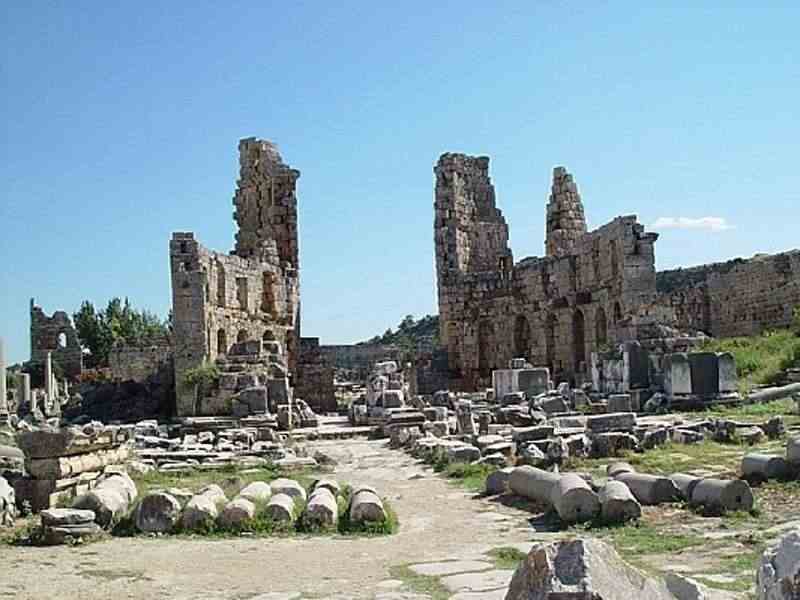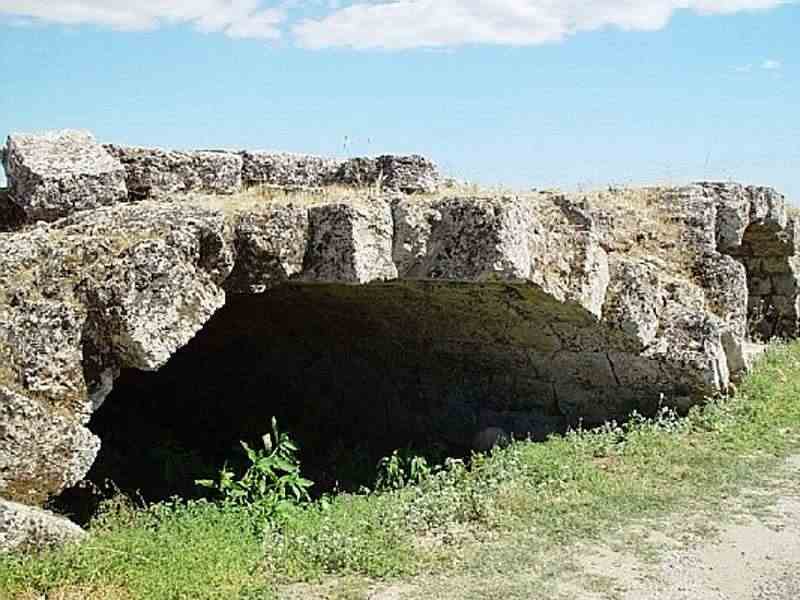
The stadium
was built on a substructure of 70 vaulted chambers. These chambers are
interconnected, with every third compartment providing entrance to the
theatre.
From
inscriptions over the remaining compartments giving the names of their
owners and listing various types of goods,
it is clear that these spaces
were used as shops.
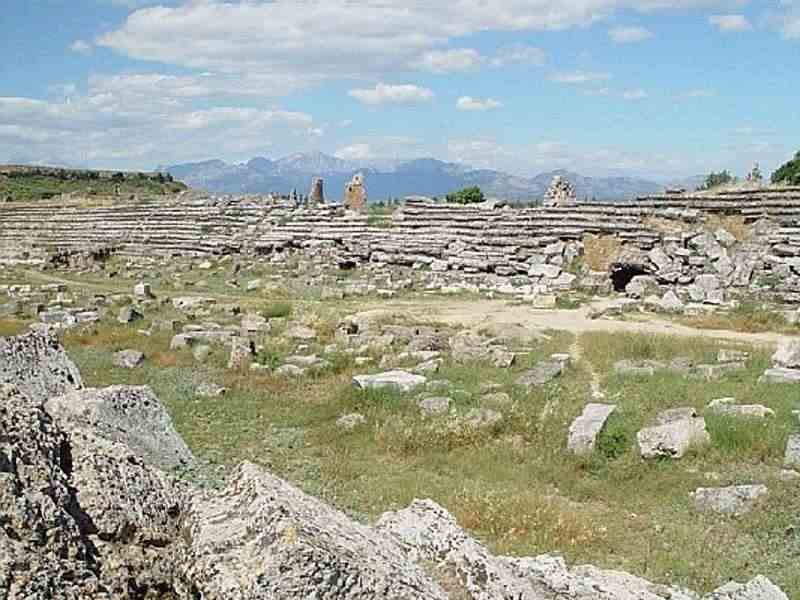
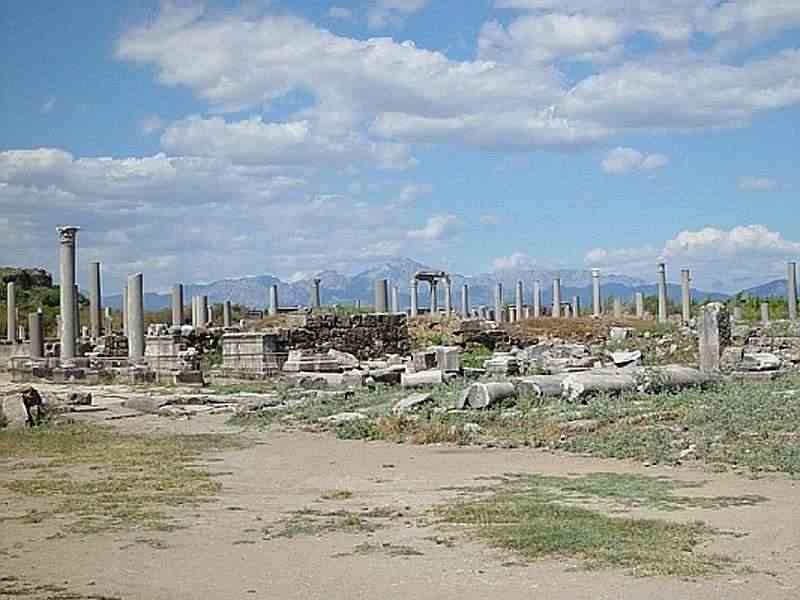

The gymnasium
and bathing complex.
This photo shows the caldarium (hot room) where hot
air from the boiler room under the floor and water on the floor
produced a sauna.
Washing
in a Roman bath was a proces that took place in several stages.
First
the bather removed his clothing in a room called the apodyterium and
from there entered the palaestra where he took his exercise.
Then he either
went into the pool to get rid of the dirt and perspiration from this
physical exertion, or washed himself in hot water in the caldarium.
From there he went to the tepidarium or to the frigidarium for a cold water bath.
In the Roman era the bath was not just a place for washing, but was also a place where men met to pass the time of day or to discuss a variety of important topics.

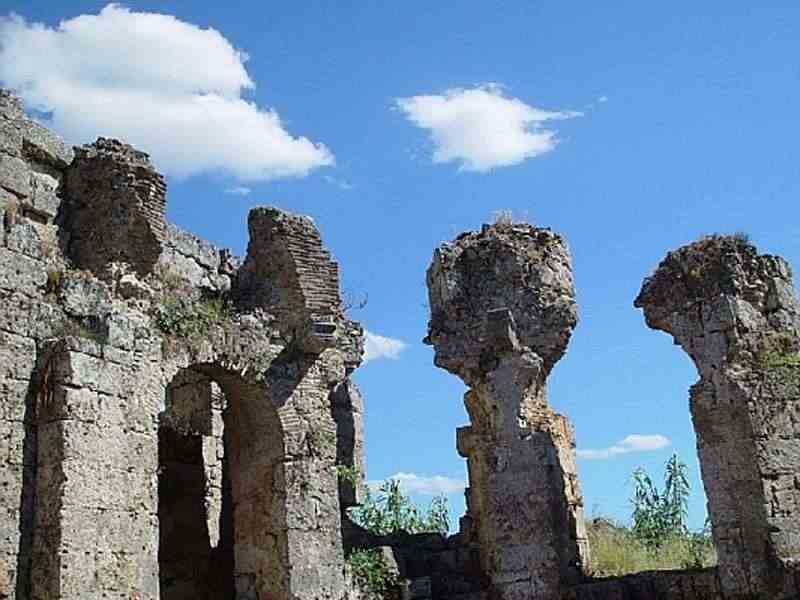
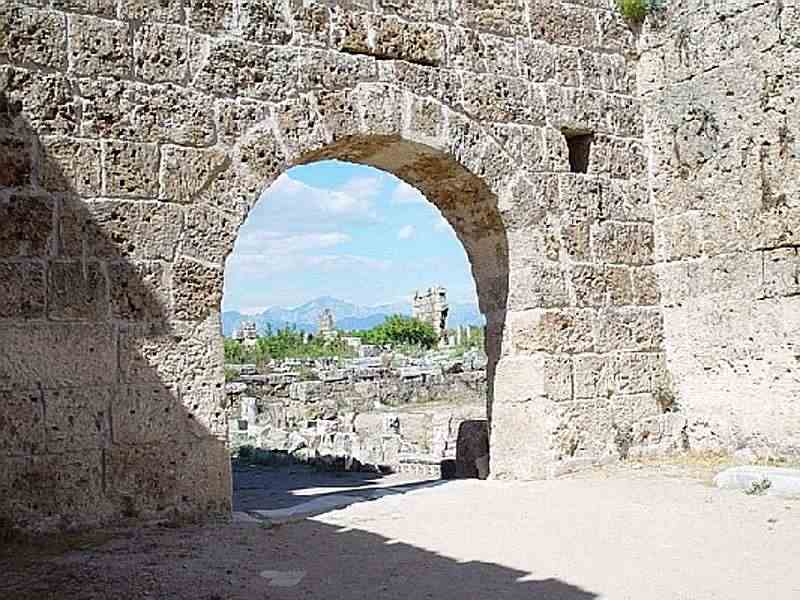
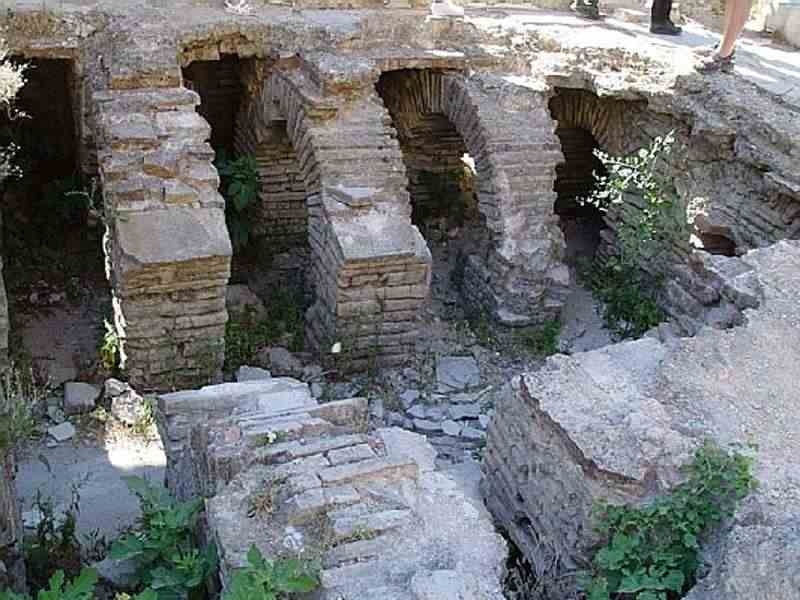
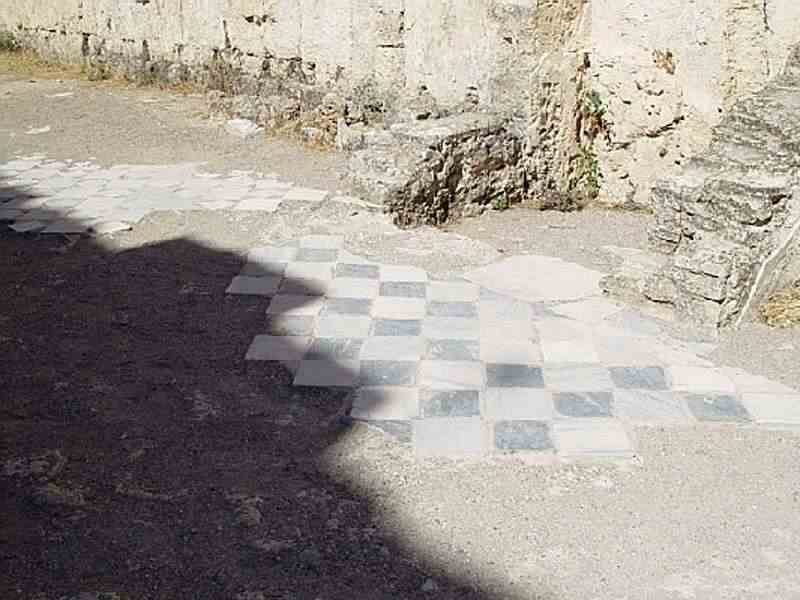
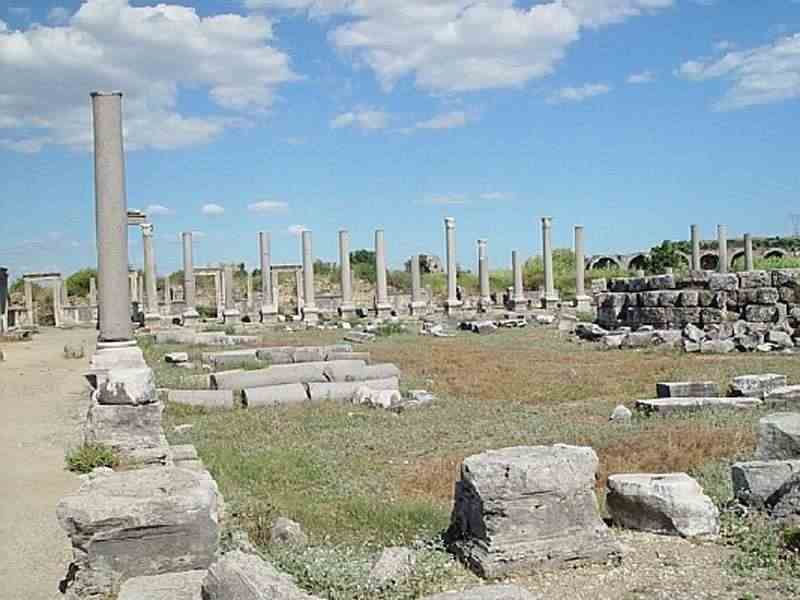

A butcher's
symbol outside the ruins of one of many shops in the portico which
surrounded the agora.
In its heyday it must have been a very impressive
sight with the colonnaded streets and porticoes.
The
porticoes also provided a place where people could both take shelter
from the violent rains in winter,
and protect themselves from Perge's
extremely hot summer sun.
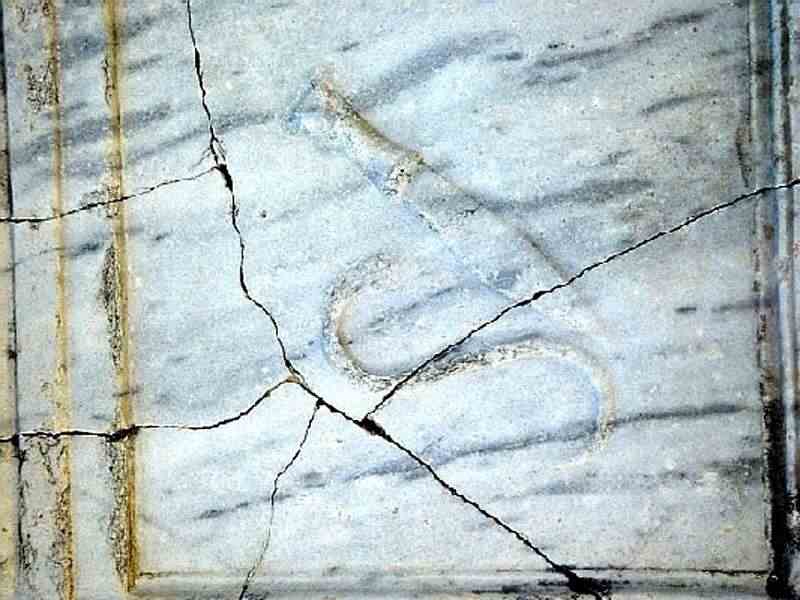
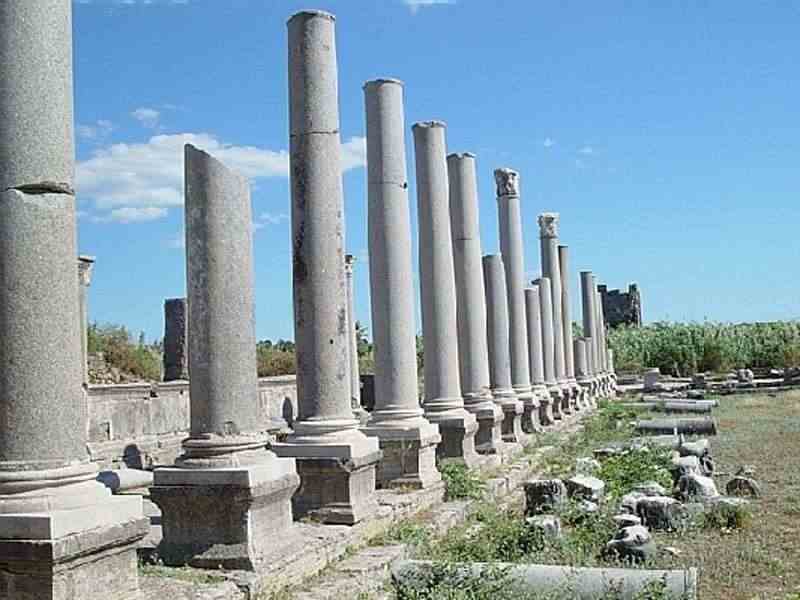
At the northern end of the inner court is a Hellenistic gate that is Perge's most magnificent structure.
Dating to the third century B.C., this gate, consisting of two towers with a horseshoe-shaped court behind them,
was clevery designed according to the defensive strategy of the day.
